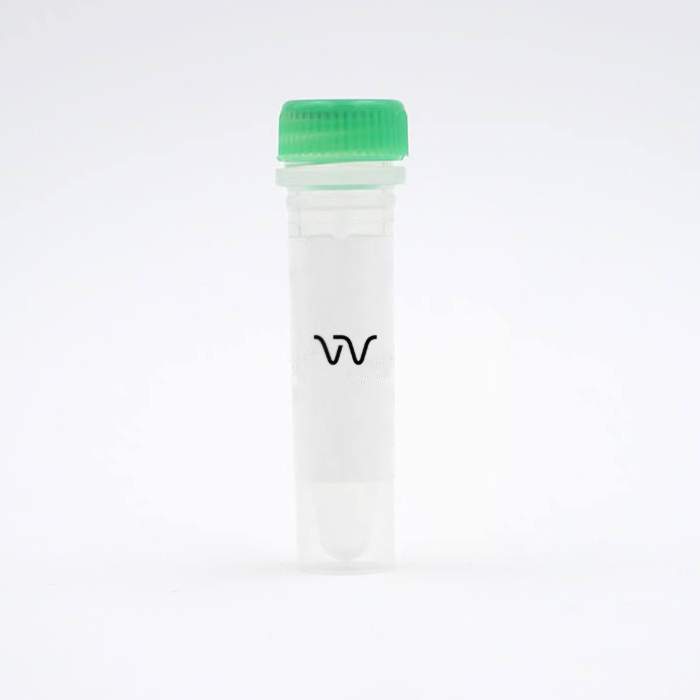

HTRF Human Total JAK3 Detection Kit, 500 Assay Points


HTRF Human Total JAK3 Detection Kit, 500 Assay Points






The Total JAK3 kit is designed to monitor the expression level of cellular JAK3.
For research use only. Not for use in diagnostic procedures. All products to be used in accordance with applicable laws and regulations including without limitation, consumption and disposal requirements under European REACH regulations (EC 1907/2006).
| Feature | Specification |
|---|---|
| Application | Cell Signaling |
| Sample Volume | 16 µL |
The Total JAK3 kit is designed to monitor the expression level of cellular JAK3.
For research use only. Not for use in diagnostic procedures. All products to be used in accordance with applicable laws and regulations including without limitation, consumption and disposal requirements under European REACH regulations (EC 1907/2006).



HTRF Human Total JAK3 Detection Kit, 500 Assay Points



HTRF Human Total JAK3 Detection Kit, 500 Assay Points



Product information
Overview
The Human Total JAK3 detection assay monitors cellular JAK3 protein levels.
The Janus family kinases JAK1, JAK2, JAK3, and TYK2 are non-receptor protein tyrosine kinases that signal downstream cytokine receptors (mainly IL-R and IFN-R) and activate the STAT transcription factors. A specific JAK/JAK combination associates with a specific receptor and gives specificity to the downstream JAK/STAT signaling pathway. JAK3, in combination with JAK1, associates exclusively with the IL-2Rγ family receptors, and triggers the activation of the transcription factors STAT1, STAT3, STAT5, and STAT6 to regulate lymphocyte maturation, survival, activation, and differentiation.
JAK3 dysregulation has been reported in cancer and immune disorders. The main therapeutic strategies consist in developing potent and selective inhibitors/degraders of JAK3.
Specifications
| Application |
Cell Signaling
|
|---|---|
| Automation Compatible |
Yes
|
| Brand |
HTRF
|
| Detection Modality |
HTRF
|
| Lysis Buffer Compatibility |
Lysis Buffer 1
Lysis Buffer 3
Lysis Buffer 4
|
| Molecular Modification |
Total
|
| Product Group |
Kit
|
| Sample Volume |
16 µL
|
| Shipping Conditions |
Shipped in Dry Ice
|
| Target Class |
Phosphoproteins
|
| Target Species |
Human
|
| Technology |
TR-FRET
|
| Therapeutic Area |
Inflammation
|
| Unit Size |
500 Assay Points
|
Video gallery

HTRF Human Total JAK3 Detection Kit, 500 Assay Points

HTRF Human Total JAK3 Detection Kit, 500 Assay Points

How it works
Total JAK3 assay principle
The Total JAK3 assay quantifies the expression level of JAK3 in a cell lysate. Unlike Western Blot, the assay is entirely plate-based and does not require gels, electrophoresis, or transfer. The Total JAK3 assay uses two labeled antibodies, one coupled to a donor fluorophore and the other to an acceptor. Both antibodies are highly specific for a distinct epitope on the protein. In the presence of JAK3 in a cell extract, the addition of these conjugates brings the donor fluorophore into close proximity with the acceptor and thereby generates a FRET signal. Its intensity is directly proportional to the concentration of the protein present in the sample, and provides a means of assessing the protein's expression under a no-wash assay format.

Total JAK3 two-plate assay protocol
The two-plate protocol involves culturing cells in a 96-well plate before lysis, then transferring lysates into a 384-well low volume detection plate before the addition of Total JAK3 HTRF detection reagents. This protocol enables the cells' viability and confluence to be monitored.

Total JAK3 one-plate assay protocol
Detection of Total JAK3 with HTRF reagents can be performed in a single plate used for culturing, stimulation, and lysis. No washing steps are required. This HTS designed protocol enables miniaturization while maintaining robust HTRF quality.

Assay validation
siRNA-mediated JAK3 downregulation
HEL cells were treated with 2.5 µM of Accell siRNA (Horizon) targeting specifically JAK3 or with a non-targeting siRNA (included as control) in a 96-well plate (200,000 cells/well) under 100 µL. After 48h incubation at 37°C, 50 µL of complete culture medium was added and the cells were incubated for an additional 24h-incubation at 37°C. After plate centrifugation, the cells were lysed with 50 µL of supplemented lysis buffer #4 (1X) and 16 µL of lysates were transferred into a low volume white microplate before the addition of 4 µL of premixed HTRF Total JAK3 detection antibodies. The HTRF signal was recorded after a 3h-incubation at RT. Cell treatment with JAK3 siRNA led to a significant downregulation of JAK3 as highlighted by the 84% signal decrease compared to the cells transfected with the non-targeting siRNA.

Cell density experiments on several human cell lines
The suspension human cell lines HEL, U-937 and Jurkat were dispensed under 30 µL at different cell densities in a 96-well half-area plate, and lysed with 10 µL of supplemented lysis buffer #4 (4X). For HTRF detection of JAK3 protein levels, 16 µL of cell lysate were transferred into a low volume white microplate and 4 µL of premixed HTRF Total JAK3 detection antibodies were added. The HTRF signal was recorded after a 3h-incubation at RT.



HTRF total JAK3 assay compared to Western Blot
U-937 cells were cultured in a T175 flask in complete culture medium. After 48h incubation at 37°C, the cells were centrifuged, and the pellet was lysed with 3 mL of supplemented lysis buffer #4 (1X) for 30 minutes at RT under gentle shaking.
Serial dilutions of the cell lysate were performed using supplemented lysis buffer, and 16 µL of each dilution were transferred into a low volume white microplate before the addition of 4 µL of premixed HTRF total JAK3 detection reagents. Equal amounts of lysates were used for a side-by-side comparison between HTRF and Western Blot.
Using the HTRF total JAK3 assay, 1,560 cells/well were enough to detect a significant signal, while 6,250 cells were needed to obtain a minimal chemiluminescent signal using Western Blot. Therefore, in these conditions, the HTRF total JAK3 assay was 4 times more sensitive than the Western Blot technique.

Simplified pathway
JAK3 Signaling Pathway
JAK3 in combination with JAK1 associates exclusively with the IL-2Rγ family receptors that are activated by IL-2, IL-4, IL-7, IL-9, IL-15, & IL-21. Upon receptor activation, JAK3 and JAK1 transphosphorylate each other, and then activate the transcription factors STAT1, STAT3, STAT5, and STAT6. In turn they dimerize and translocate to the nucleus to trigger the transcription of genes regulating lymphocyte maturation, survival, activation, and differentiation.

Resources
Are you looking for resources, click on the resource type to explore further.
Discover the versatility and precision of Homogeneous Time-Resolved Fluorescence (HTRF) technology. Our HTRF portfolio offers a...
This guide provides you an overview of HTRF applications in several therapeutic areas.
SDS, COAs, Manuals and more
Are you looking for technical documents related to the product? We have categorized them in dedicated sections below. Explore now.
- LanguageEnglishCountryUnited States
- LanguageFrenchCountryFrance
- LanguageGermanCountryGermany
- Lot Number01DLot DateApril 3, 2026
- Lot Number01ALot DateAugust 24, 2024
- Lot Number01BLot DateAugust 24, 2024
- Resource TypeManualLanguageEnglishCountry-


How can we help you?
We are here to answer your questions.



































